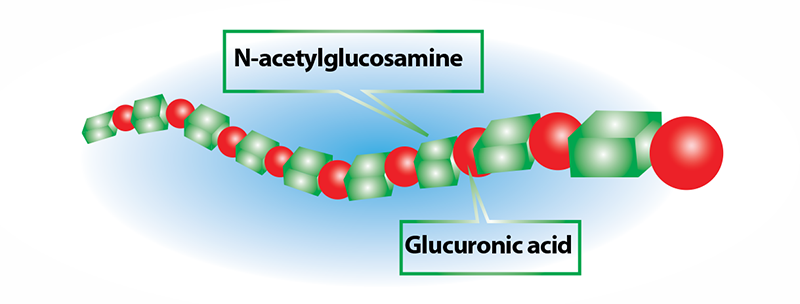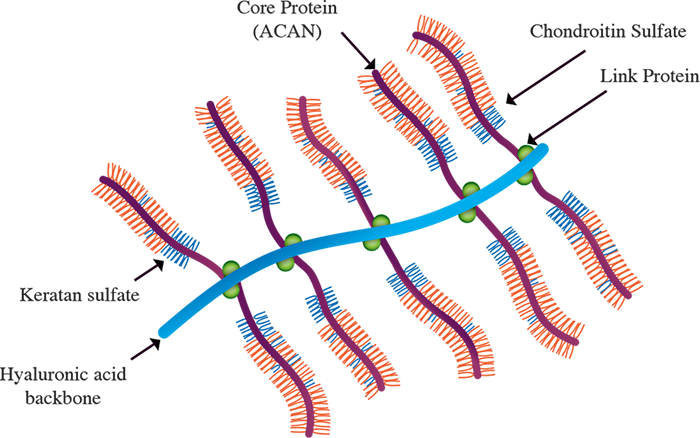Hyaluronic Acid
Hyaluronic acid (HA), a non-sulfated glycosaminoglycan with a linear polymer of disaccharides structure, is one of the main component of extracellular matrix (ECM). This molecule is made up of a repetitive structure of two simple sugars, one called glucuronic acid and the other one is N-acetyl-D-glucosamine.

Biological Features
Hyaluronic Acid (HA) is biologically compatible and energetically stable molecule.
Hyaluronic acid molecules can swell up to 1000 times. It is important to note that the multiple biological roles of hyaluronic acid depend to a large degree on the molecular weight of its chain. Hyaluronic acid can be 2500 disaccharide repeats in length. Polymers of hyaluronic acid can range in size from 5 to 20000 kDa in vivo. The average molecular weight in human synovial fluid is 3-4 million Da, hyaluronic acid purified from human umbilical cord is 3140 kDa. The molecular mass of Hyaluronic acid in normal biological tissues and fluids is very high (ca. 1000-8000 kDa.)
Product Category
Availability
Hyaluronic acid is distributed from prokaryotic to Eukaryotic cells. With high concentration can be found in fluids of the vitreous humor of the eyes and synovial fluids of joints. It considered as an important component of the skin, where it is involved in tissue healing. The umbilical cord, skeletal tissue. It is also abundant in embryonic mesenchymal tissues. The hyaluronic acid that is today used in medical industry is secreted from rooster combs or made by bacteria in the laboratory.
Sponsored by Nitka
Hyland.Center is the Internet’s largest dedicated HA Information web portal/search engine for both healthcare professionals and researchers.
Banner advertisements are clearly distinguished by the "Advertisement & Sponsorship". Please refer to our advertising page for more information.
Hyaluronic acid (HA) filler can be used as a safe, simple, and even rational economic alternative for the treatment of PRS
Parry-Romberg Syndrome Augmented by Hyaluronic Acid Filler
Dry eye and ocular tolerability after LASIK in patients treated with a preservative-free lacrimal substitute (Hylabak®) or preserved lacrimal substitute (Systane
Assessment of dry eye signs and symptoms and ocular tolerance of a preservative-free lacrimal substitute (Hylabak®) versus a preserved lacrimal substitute (Systane®) used for 3 months in patients after LASIK.
Enhancement of diabetic wound healing with hyaluronic acid-povidone-iodine compound
Hyaluronic Acid-Povidone-Iodine Compound Facilitates Diabetic Wound Healing in a Streptozotocin-Induced Diabetes Rodent Model.


